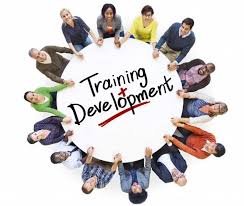Training and development strategies

Investing in job training and development is essential for cultivating a skilled and motivated workforce. Not only does it enhance employee performance, but it also boosts job satisfaction and retention. Here are some effective strategies for job training and development that organizations can implement to foster a culture of continuous learning and growth:
1. Identify Training Needs
The first step in creating an effective training program is to identify the specific skills and knowledge gaps within your organization. Conducting a thorough needs assessment helps pinpoint areas where employees require further development. This can be achieved through surveys, performance evaluations, and feedback from managers and employees. Understanding these needs allows you to tailor training programs that address the most critical areas for improvement.
2. Develop Personalized Training Plans
Once you’ve identified training needs, develop personalized training plans for employees. Recognize that each employee may have different learning styles and career goals. Personalized plans can include a mix of on-the-job training, mentorship, online courses, workshops, and seminars. By catering to individual preferences and needs, you can maximize engagement and effectiveness.
3. Leverage Technology and E-Learning
Incorporating technology and e-learning platforms into your training programs can provide flexible and accessible learning opportunities. Online courses, webinars, and virtual workshops allow employees to learn at their own pace and convenience. Additionally, using learning management systems (LMS) can help track progress, manage course materials, and assess employee performance.
4. Encourage Continuous Learning
Promote a culture of continuous learning by encouraging employees to seek out new knowledge and skills. Offer incentives such as certification programs, tuition reimbursement, and rewards for completing courses. Encourage employees to attend industry conferences, participate in webinars, and join professional associations. This not only enhances their skills but also keeps them informed about industry trends and best practices.
5. Implement Cross-Training and Job Rotation
Cross-training and job rotation are effective strategies for broadening employees’ skill sets and increasing their understanding of different roles within the organization. Cross-training involves training employees to perform tasks outside their primary responsibilities, while job rotation involves moving employees between different roles. These strategies not only build a more versatile workforce but also help employees discover new interests and career paths.
6. Provide Regular Feedback and Coaching
Regular feedback and coaching are vital components of employee development. Constructive feedback helps employees understand their strengths and areas for improvement, while coaching offers guidance and support for achieving career goals. Implement regular performance reviews and one-on-one meetings to discuss progress, set new goals, and provide personalized coaching.
7. Measure Training Effectiveness
To ensure the effectiveness of your training programs, regularly assess their impact on employee performance and organizational goals. Use metrics such as employee satisfaction surveys, performance metrics, and retention rates to evaluate the success of your training initiatives. This data can help refine and improve future training programs.
8. Promote a Growth Mindset
Encourage a growth mindset within your organization, where employees view challenges as opportunities to learn and grow. Celebrate successes and learn from failures, fostering an environment where continuous improvement is valued. This mindset can help employees embrace new challenges and be more adaptable in an ever-changing work environment.
Implementing these job training and development strategies can significantly enhance employee skills, boost morale, and contribute to the overall success of your organization. By prioritizing employee growth, companies can build a more capable and engaged workforce, ready to tackle future challenges. UAP is here to help. Contact us for more information.


